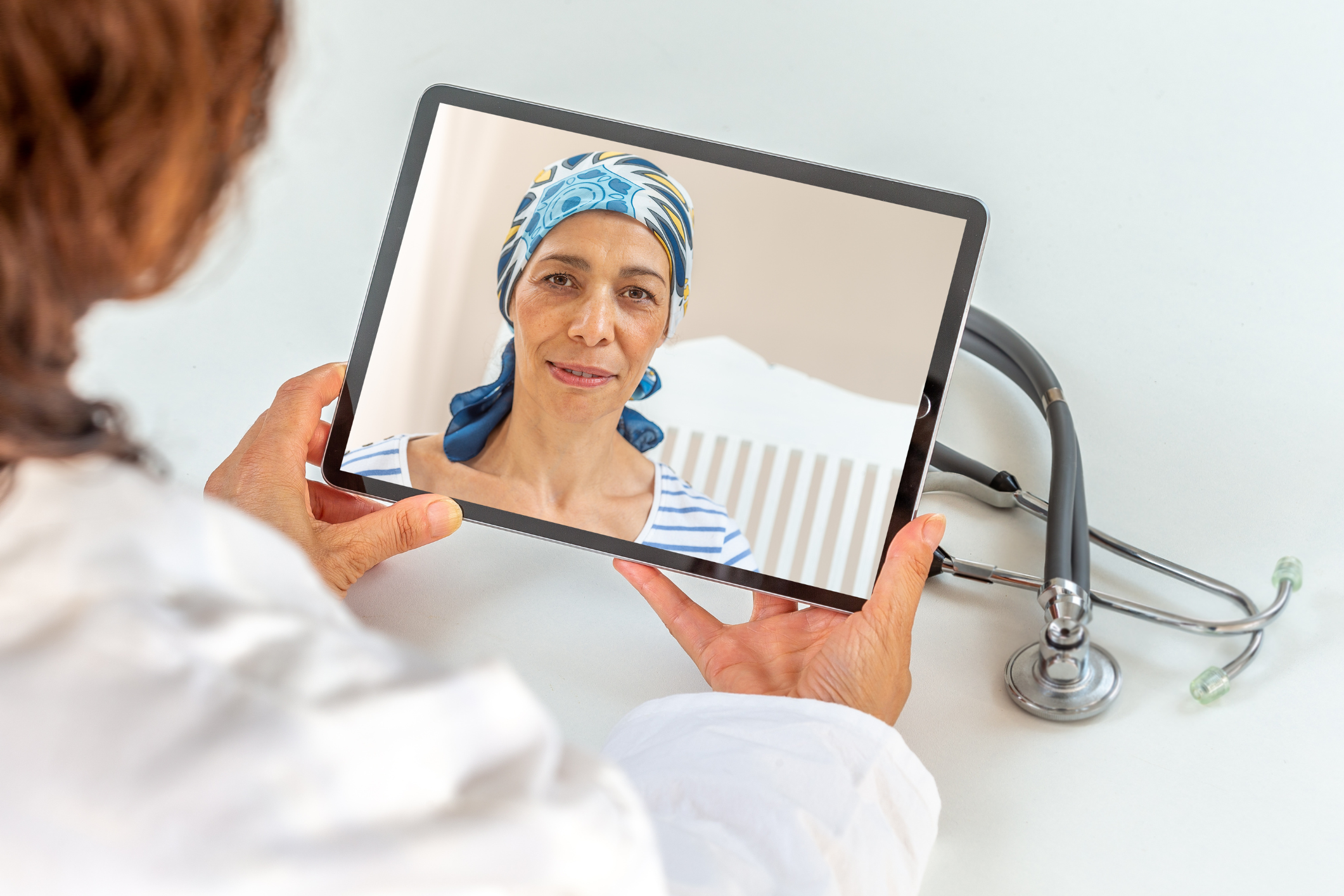By Meenal Gaekwad, Heather Butler, and Soumitra Bhuyan
The COVID-19 pandemic resulted in a significant disruption in the healthcare system in the United States, which has increased the demand for telecommunication and technology. The Department of Health and Human Services reported a 63-fold increase in the use of telehealth, from 840,000 in 2019 to 52.7 million in 2020, as an integral communication channel between patients and healthcare providers, enabling continuity of care and treatment during the peak of the pandemic.
Telehealth was initially developed to provide medical care and assist astronauts in space in the 1970s, and it has been expanded and implemented widely with portability, accessibility, and cost-effectiveness. Amidst the COVID-19 pandemic, cancer patients have benefited from convenient telehealth visits; for example, telehealth has been shown to mitigate costs associated with traveling to health visits and shorten lengthy wait times.
In a study published in the Journal of the American Medical Association, researchers found that adult cancer patients from the Moffitt Cancer Center in Florida saved on average $147.40 to $186.10 per visit. In addition, telehealth contributed enormously to reduce traveling costs per visit, ranging from $79.71 to $146.0. Given the financial costs and stress surrounding cancer diagnosis and treatment, telehealth may be an important healthcare delivery option. Zhang and colleagues (2023) conducted a cross-sectional study that found that cancer patients who reported positive association between global health and more satisfaction with telehealth for medical care.
Not only has telehealth provided numerous benefits to cancer patients, but it has also been favorably adopted by many cancer specialists. In a survey administered to 200 oncologists, the satisfaction rate was high: 60 percent believed that virtual consultation provided the resources for reviewing diagnostics tests and formulating lines of treatment.
Moreover, a systematic review of surgical oncology telehealth use demonstrated that providers from multiple studies generally expressed positive perceptions of virtual care. Surgical oncology specialists described being able to carry out adequate virtual treatment plans that produced similar outcomes to in-person methods. For example, telehealth as a follow-up for postoperative cancer patients yielded comparable clinical and disease outcomes to in-person care. In addition, readmission, recurrence, and morbidity or mortality at virtual clinics for postoperative surveillance were not statistically different from in-person appointment outcomes.
Similarly, in another survey conducted by the National Comprehensive Cancer Network Electronic Health Record Oncology Advisory Group to understand the use of telemedicine in oncology, the results suggest that telemedicine was effective across a variety of clinical scenarios, including surgical, hematology, gynecologic, medical, and radiation oncology.
Despite telehealth’s advantages, it has some limitations—namely, inconsistent quality of care, barriers to access, health disparities, and data privacy and security. For example, cancer patients who suffered from poor mental health and isolation during the COVID-19 pandemic reported unsatisfactory experiences with telehealth. Additionally, the widespread use of telehealth exacerbates disparities already present in the US healthcare system. In a cohort study, researchers observed that thoracic cancer patients who were Black and used Medicaid or were located in high-risk zip code areas had higher chances of poor telemedicine experience and clinical outcomes. The study suggests that unsuccessful telemedicine visits may be led to long-term poor health outcomes.
Studies have also illuminated great digital divides within populations of cancer patients. During the first phase of the pandemic, digital disparities were evident among older, Black, Hispanic, lower-income, and rural cancer survivors; fortunately, since then, policymakers have invested in more robust telehealth infrastructure and digital literacy campaigns to guarantee equal access to digital means of healthcare. For instance, the Telehealth Broadband Pilot Program aids in the linking of rural communities to strong internet connections, and the federal Affordable Connectivity Program provides discounted internet amenities and devices for low-income and underserved minorities.
Other federal initiatives to advance telehealth efforts include the National Institute of Health Cancer Institute’s Telehealth Research Centers of Excellence (TRACE), established in 2022 in response to the rise in the popularity of telehealth and its potential to advance oncology care. TRACE provides several health organizations with funding to set up telehealth research centers. One example includes the University of Pennsylvania Telehealth Research Center of Excellence (Penn TRACE), which examines novel telehealth strategies for lung cancer care, focusing heavily on health disparities and digital illiteracy.
Although COVID-19-related quarantining measures have been lifted in most countries and the World Health Organization (WHO) ended the global health emergency declaration for COVID-19 in May, telehealth remains a critical option for cancer patients and providers. Virtual care can be used with in-person visits to create an optimally convenient and effective treatment plan for cancer patients.
Meenal Gaekwad is a Master of Health Administration student at Edward J. Bloustein School at Rutgers, The State University of New Jersey. Heather Butler is an undergraduate student at the School of Environmental & Biological Sciences at Rutgers, The State University of New Jersey. Soumitra Bhuyan is an Associate Professor at Edward J. Bloustein School at Rutgers, The State University of New Jersey.

